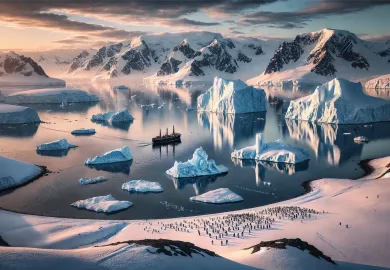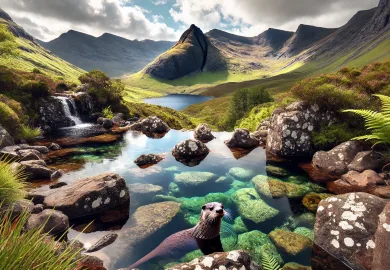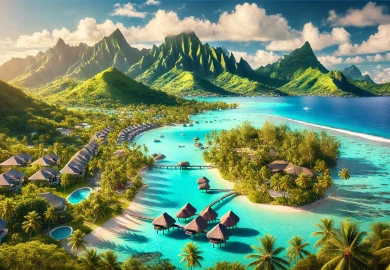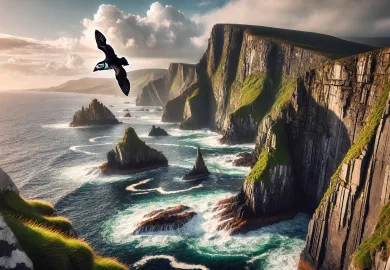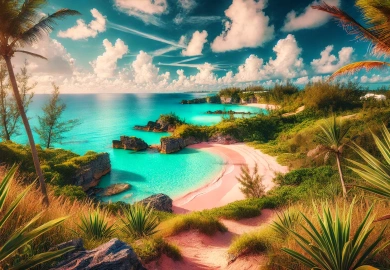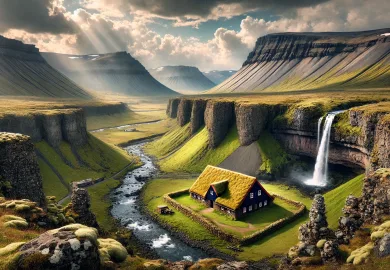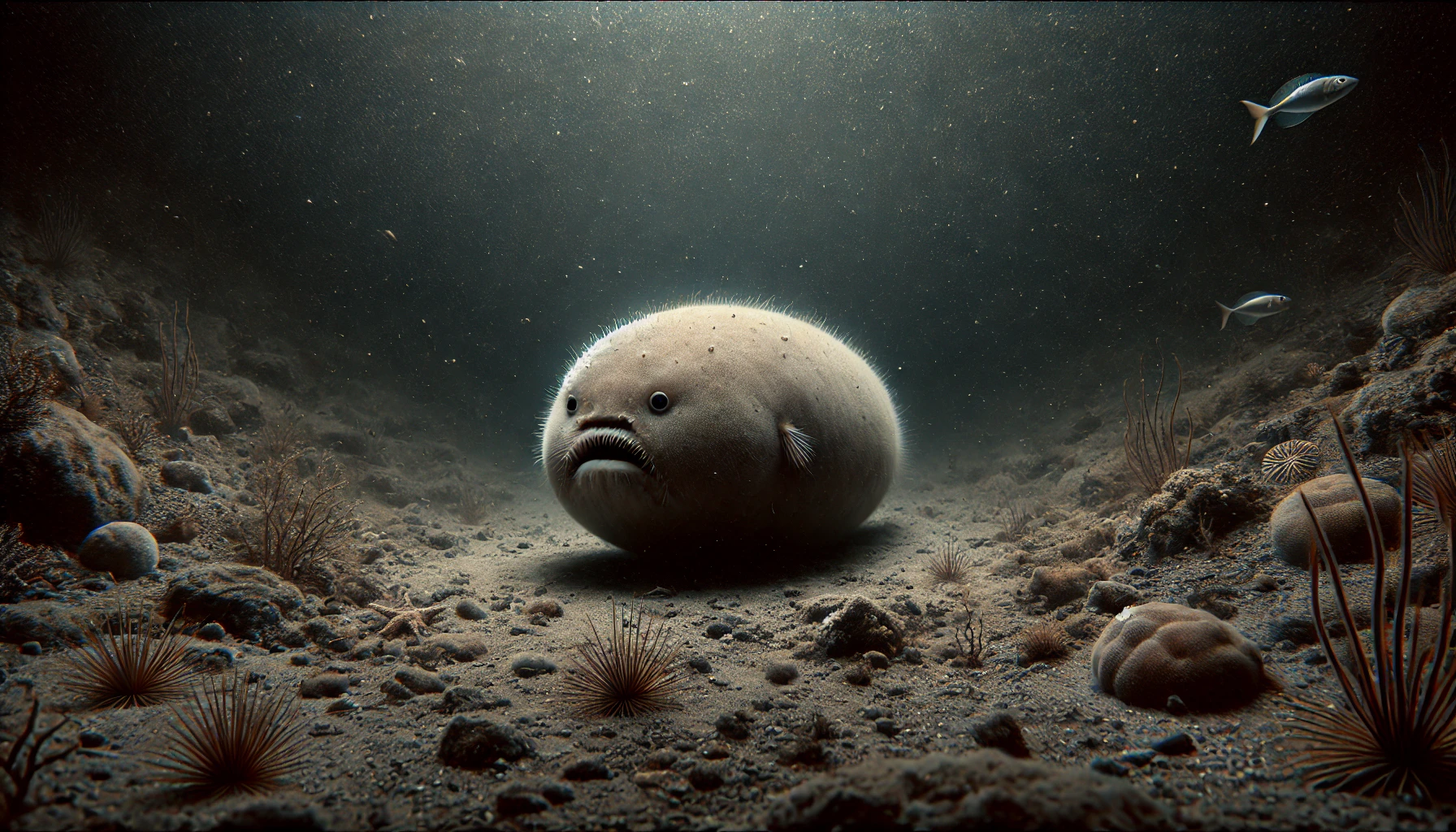
The deep sea is home to some of the most fascinating and peculiar creatures on Earth, but none quite capture the imagination like the blobfish. Often dubbed as the “world’s ugliest animal,” this peculiar marine creature has become something of a cultural phenomenon, intriguing scientists and the general public alike. But beyond its unusual appearance, the blobfish (Psychrolutes marcidus) is an extraordinary example of deep-sea adaptation. In this article, we’ll dive deep into the life of the blobfish, exploring what makes it so unique, why it looks the way it does, and what its existence tells us about the mysteries of the deep ocean.
Understanding the Blobfish: What Is It?
The blobfish belongs to the family Psychrolutidae, a group of deep-sea fishes that live in the dark, high-pressure environments of the ocean’s depths. It is native to the deep waters off the coasts of mainland Australia, Tasmania, and New Zealand, where it resides at depths ranging from 600 to 1,200 meters (2,000 to 3,900 feet). The conditions at these depths are extreme—intense pressure, near-freezing temperatures, and complete darkness dominate the blobfish’s world.
One of the most remarkable features of the blobfish is its gelatinous body. Unlike most fish, which rely on a swim bladder to maintain buoyancy, the blobfish’s body is composed of a jelly-like substance that is slightly less dense than water. This allows the blobfish to float just above the sea floor without expending much energy. In its natural habitat, the blobfish does not appear as “blobby” as it does when brought to the surface. The lack of pressure at sea level causes its body to collapse into the more familiar (and less flattering) shape that has made it famous.
The blobfish’s diet primarily consists of small crustaceans, sea urchins, and other invertebrates that it encounters on the ocean floor. It is a sedentary predator, meaning it often waits for prey to come close before making a move. Its slow, almost lazy lifestyle is perfectly suited to the energy-sparse environment of the deep sea, where food can be scarce.
The Blobfish’s Peculiar Appearance: Nature’s Unintended Consequence
The blobfish’s unappealing appearance is a result of the extreme environment it inhabits. Its gelatinous body is an adaptation to the high-pressure environment of the deep sea, where most fish would be crushed by the sheer weight of the water above them. The pressure at the depths where the blobfish lives can be up to 120 times greater than at sea level, which necessitates unique adaptations that most other animals do not possess.
In its natural habitat, the blobfish’s body is more compact and less “blobby.” The high-pressure environment supports its body structure, keeping it relatively firm. However, when brought to the surface, the drastic reduction in pressure causes its body to lose shape, giving it the now-infamous droopy, formless appearance. This unfortunate transformation is what has led to the blobfish’s reputation as the world’s ugliest animal.
Despite its unglamorous looks, the blobfish is a fascinating example of how life can adapt to thrive in the most inhospitable environments. Its appearance is a testament to the incredible diversity of life on Earth and the surprising ways that evolution can shape organisms to fit specific ecological niches. The blobfish is not a creature that evolved to be admired for its beauty; rather, it is a survivor, perfectly adapted to one of the most extreme environments on our planet.
The Blobfish’s Role in Popular Culture: From Obscurity to Fame
The blobfish remained relatively unknown to the general public until the early 2000s, when its unusual appearance began to capture the attention of the media and the internet. The turning point came in 2013 when the blobfish was voted as the “World’s Ugliest Animal” in an online poll conducted by the Ugly Animal Preservation Society, a campaign aimed at raising awareness for endangered and less traditionally “cute” animals.
This newfound fame turned the blobfish into a cultural icon. It has since appeared in numerous memes, cartoons, and even as plush toys. The blobfish’s image has been used to symbolize the odd and the unusual, and it has become a kind of mascot for the underappreciated creatures of the animal kingdom. While the attention has often focused on its perceived ugliness, the blobfish’s rise to fame has also helped to draw attention to the challenges faced by deep-sea creatures, many of which are threatened by human activities such as deep-sea trawling.
Despite the humorous nature of its public image, the blobfish’s fame has had serious implications for the way we think about conservation. By putting the spotlight on a less conventionally attractive species, the blobfish has helped to broaden the conversation about biodiversity and the importance of protecting all forms of life, not just the charismatic megafauna that often dominate conservation efforts.
The Conservation Status of the Blobfish: Threats and Challenges
Like many deep-sea creatures, the blobfish faces several threats due to human activities, particularly deep-sea fishing. Deep-sea trawling, a method of fishing that involves dragging large nets across the ocean floor, poses a significant risk to the blobfish and other deep-sea species. This practice can destroy delicate habitats and inadvertently capture non-target species, known as bycatch. The blobfish, which lives close to the sea floor, is particularly vulnerable to being caught as bycatch in these trawls.
Another challenge facing the blobfish is the general lack of knowledge about deep-sea ecosystems. The deep ocean is one of the least explored and understood parts of our planet, and many species that inhabit these depths remain largely unstudied. This lack of information makes it difficult to assess the full extent of the threats facing the blobfish and other deep-sea creatures. Without comprehensive data, conservation efforts are hindered, and the full impact of human activities on these ecosystems remains unknown.
There are, however, efforts underway to better understand and protect deep-sea environments. Marine protected areas (MPAs) are being established in some regions to limit human activities like fishing and mining, which can harm deep-sea ecosystems. By protecting the habitats where blobfish and other deep-sea species live, these MPAs can help to ensure the survival of these unique creatures. Additionally, ongoing research into the biology and ecology of deep-sea species is crucial for informing future conservation efforts.
The Future of the Blobfish: A Symbol of Deep-Sea Conservation
The blobfish may not be the most glamorous or well-known species, but it serves as an important reminder of the incredible diversity of life on Earth and the need to protect even the most unusual and underappreciated creatures. As we continue to explore the depths of the ocean and uncover its many mysteries, the blobfish stands out as a symbol of the resilience and adaptability of life.
In the coming years, it will be crucial to expand our knowledge of deep-sea ecosystems and the species that inhabit them. Increased research and conservation efforts can help to ensure that the blobfish and other deep-sea creatures are protected from the threats posed by human activities. By doing so, we can preserve the rich biodiversity of the deep ocean for future generations to appreciate and study.
The blobfish’s story also highlights the importance of considering all forms of life in our conservation efforts, not just the ones that are aesthetically pleasing or familiar to us. Every species plays a role in the intricate web of life, and protecting biodiversity means valuing all creatures, regardless of their appearance. The blobfish, with its strange and unique adaptations, reminds us that beauty is not the only measure of worth in the natural world.
As we move forward, the blobfish can continue to serve as a quirky yet powerful symbol of the need to protect our planet’s most vulnerable and enigmatic inhabitants. Its existence challenges us to look beyond the surface and appreciate the wonders of the natural world in all their bizarre and beautiful forms.

